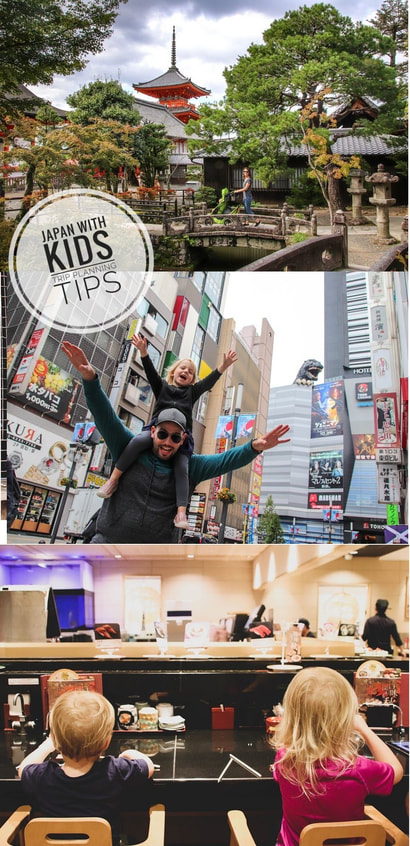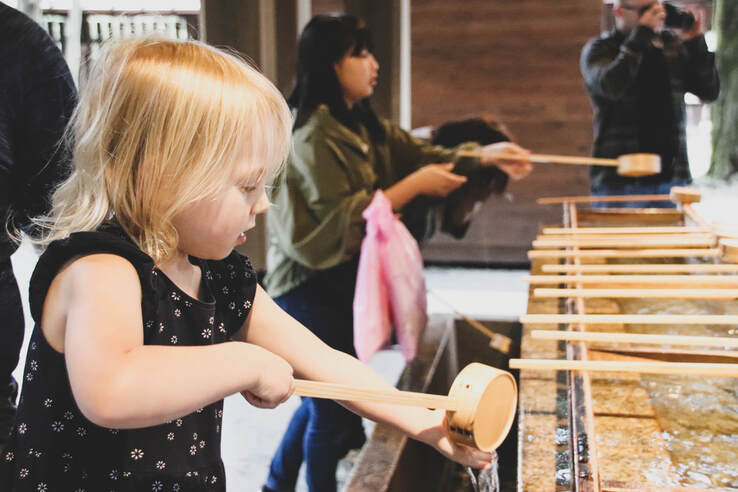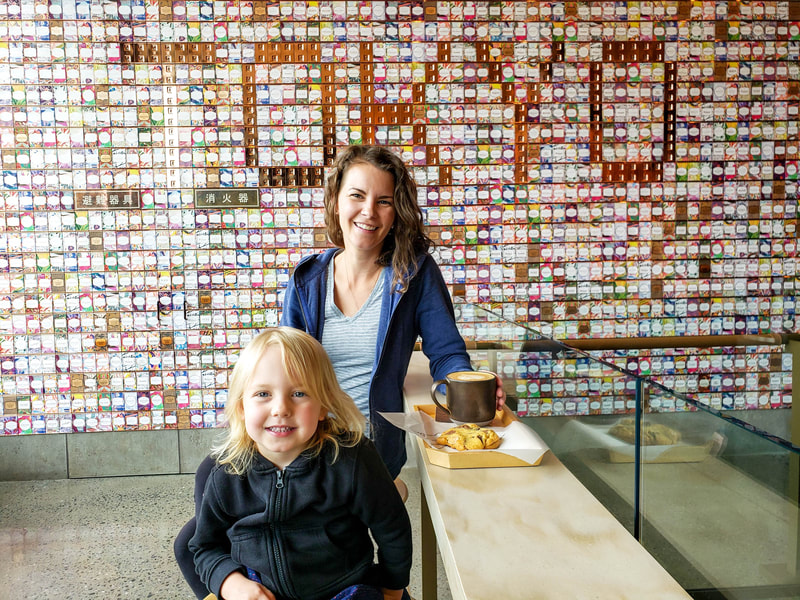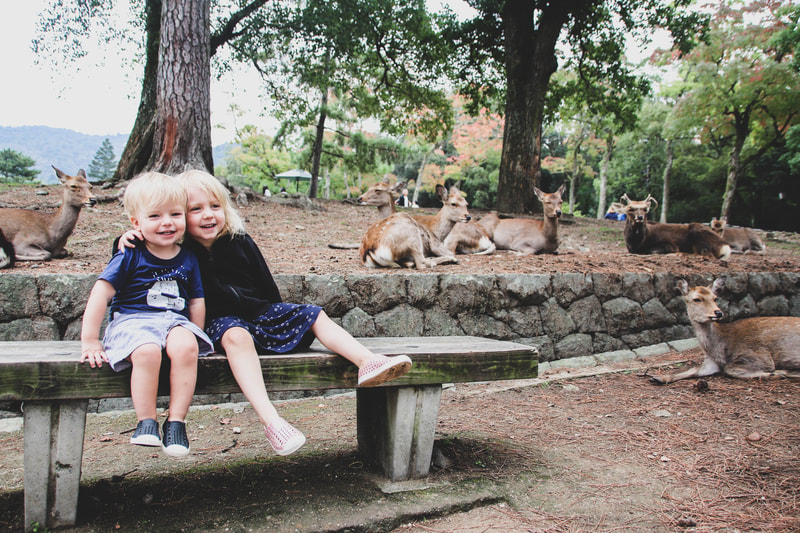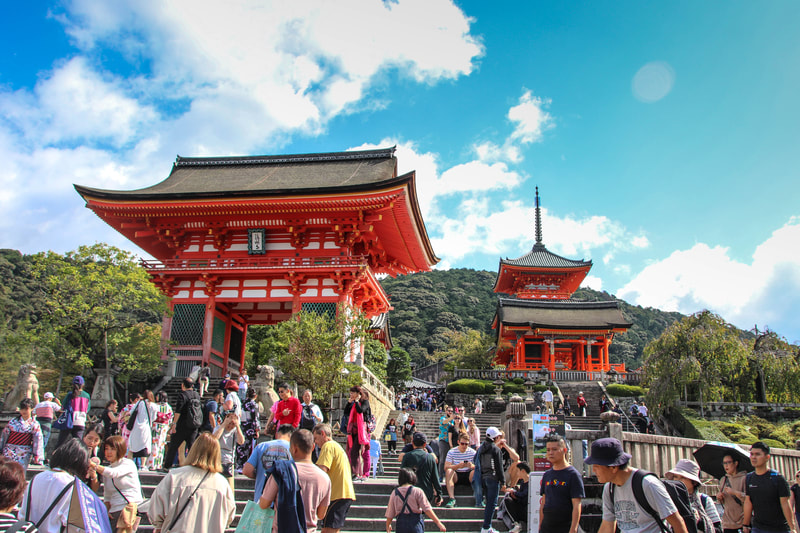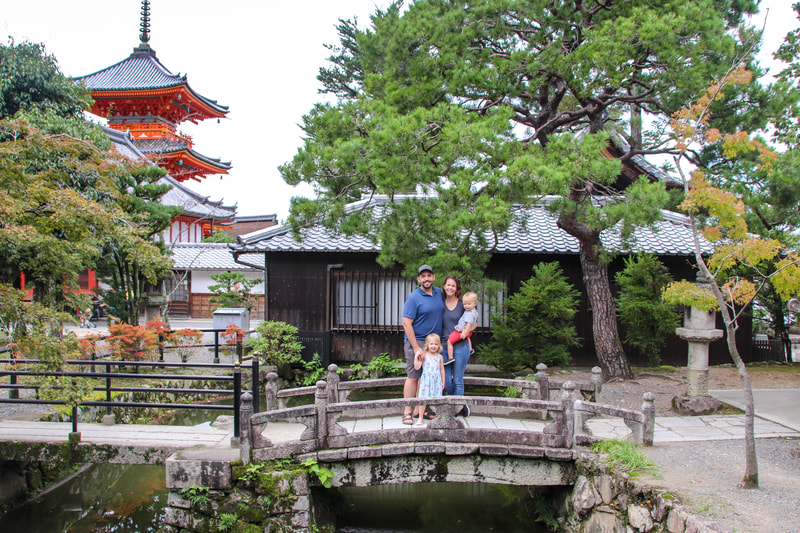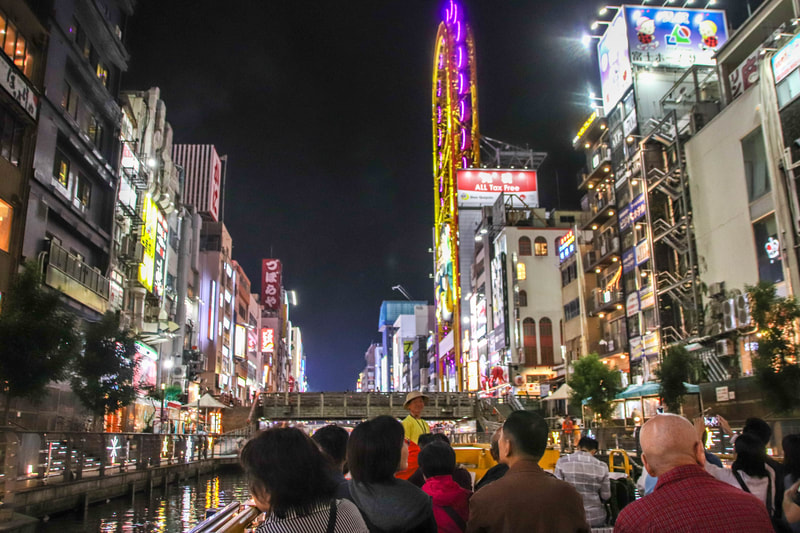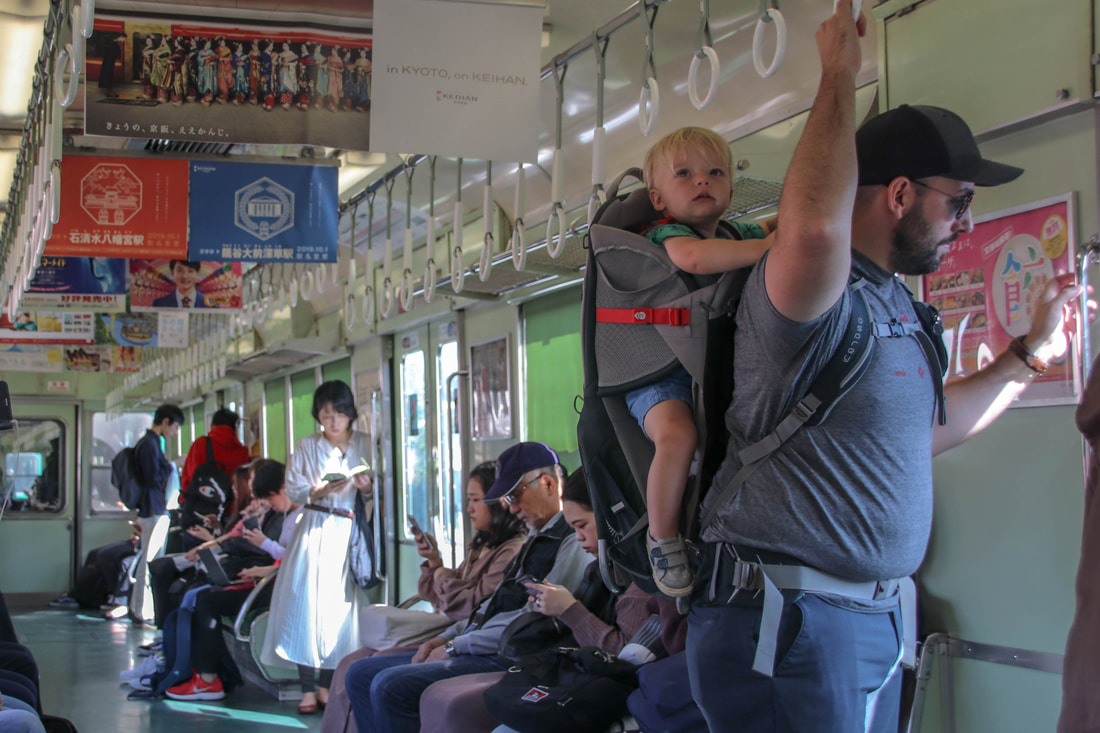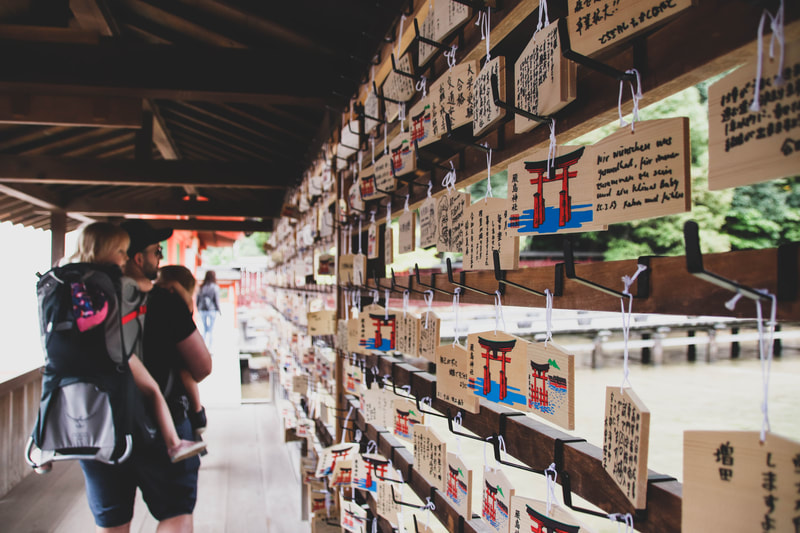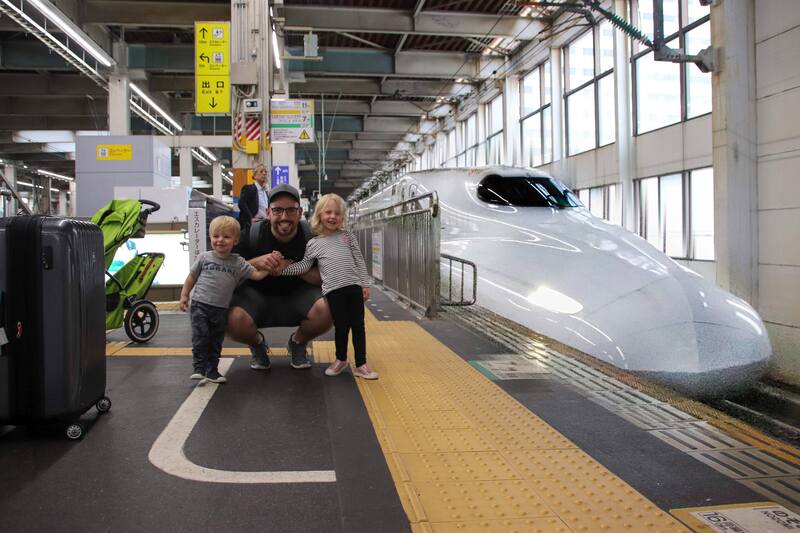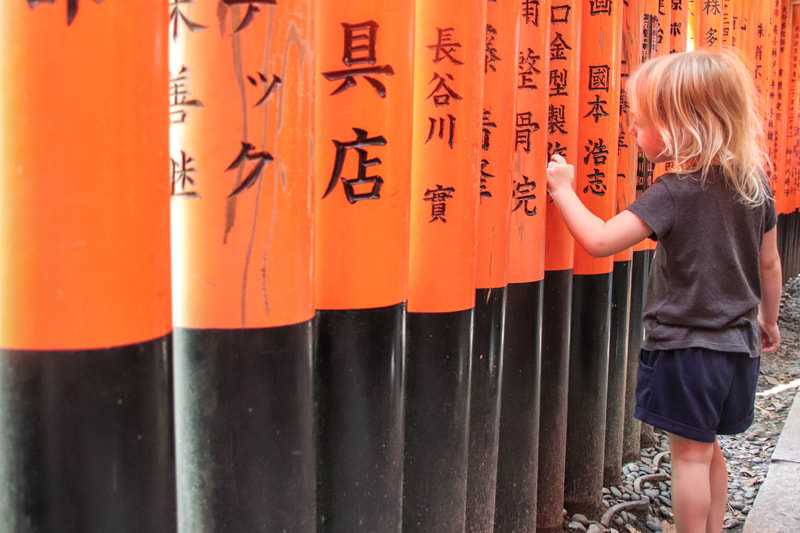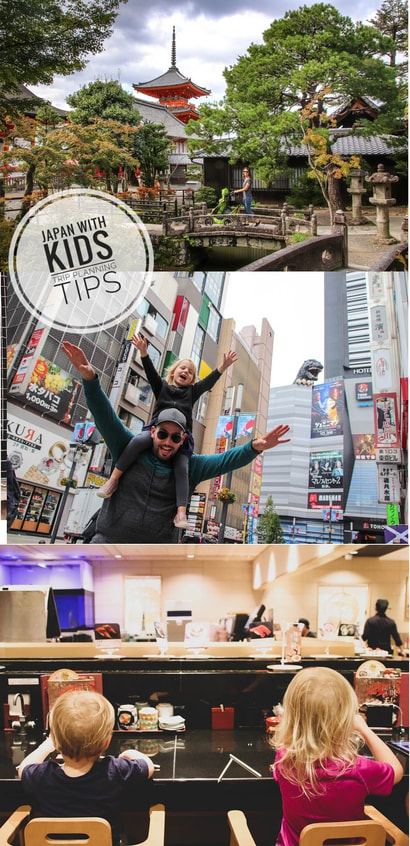Pin it for later!

Planning a trip to Japan can be an overwhelming task. There’s the language barrier but also the more I started reading suggested itineraries and noting the things we wanted to see, the more I started encountering decisions like do we get a JR pass or not? What metro card can be used where? Should we get a portable wifi or a sim card? The lingo was overwhelming – suica, pasmo, JR, shinkansen, hyperdia … I couldn’t seem to keep anything straight. Needless to say this trip took more planning and more advance thought than many others we have done and I would definitely NOT recommend winging your trip to Japan! If you’re starting to plan your trip and are just as overwhelmed as I was you have come to the right place! Below are some planning tips and apps you might want to download before you go. Hopefully this makes the planning process a smooth one!
When to go?
Obvious considerations are whether you want to ski (January and February are ideal) or see the cherry blossoms (April) or fall colours (November to early December). Summertime in Japan is HOT and sticky humid. If you’re looking for comfortable weather and avoiding peak times for crowds think about going in May-June or October-November.
TIP #1: One time you may want to avoid is Golden Week (April 29 – May 5, 2020). It’s a very popular time for locals to travel within Japan and there is often a spike in prices as well as much more limited space on trains and in hotels.
When to go?
Obvious considerations are whether you want to ski (January and February are ideal) or see the cherry blossoms (April) or fall colours (November to early December). Summertime in Japan is HOT and sticky humid. If you’re looking for comfortable weather and avoiding peak times for crowds think about going in May-June or October-November.
TIP #1: One time you may want to avoid is Golden Week (April 29 – May 5, 2020). It’s a very popular time for locals to travel within Japan and there is often a spike in prices as well as much more limited space on trains and in hotels.
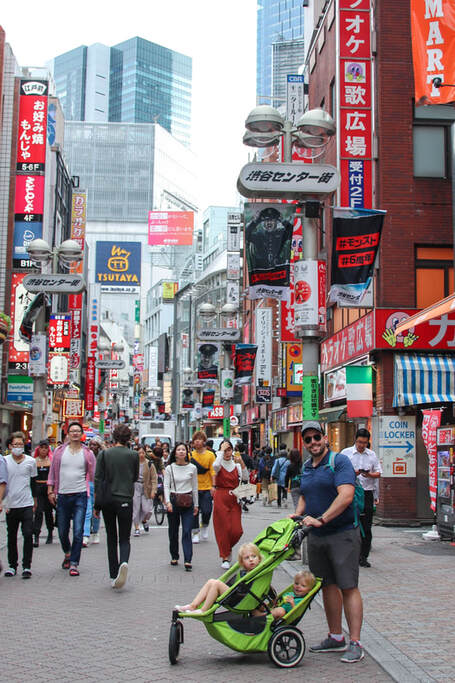
Where to go?
Japan is a big beautiful country. There is so much to do in every season, it reminded me a bit of Canada in that respect. There is skiing, hiking, fall colours, cherry blossoms, incredible festivals and anything from small traditional towns to big (HUGE) modern urban centres. It was our first trip to Japan and our kids were 3 and 1 at the time so we decided to minimize our time jumping between cities and stay in more central locations like Tokyo and Kyoto. We reserved 2 nights of flex to go somewhere a little different. We tossed around some different ideas (on our short list were Takayama, Kanazawa, the Izu peninsula and Fukuoka) but in the end we settled on Hiroshima/Miyajima.
Depending on your family’s age and interest you may want to explore different areas or spend more time in certain cities like Tokyo or Osaka to go to Disney World, Disney Sea or Universal Studios. I was really interested in the Nagano area (the Japanese Alps) and Hokkaido - the northern island known for hiking and nature preserves - really appealed to me as well. Next time, right?!
TIP #2: Join the Japan Travel Planning Group on facebook and check out The Tokyo Chapter website. Both are a huge resource for information about Japan, sample itineraries, tips, and kid friendly accommodation, dining and activity options.
TIP#3: Don’t try to pack in too much: There is SO much to see and do especially in the bigger centres like Tokyo and Kyoto. Both cities also have great day trip options. One week in each location is not too much, especially when it comes to the slower travel that you experience with kids. I would recommend staying a minimum of 5 nights in each, if you can. Believe me you will not be bored!!!
TIP #4: Check whether you can fly into one centre and out of another for a similar price. We flew into Tokyo and out of Osaka for the same price as a return flight to Tokyo. We saved ourselves approximately 250 dollars (to take the bullet train back to Tokyo) and a full day of travel by doing it this way.
Japan is a big beautiful country. There is so much to do in every season, it reminded me a bit of Canada in that respect. There is skiing, hiking, fall colours, cherry blossoms, incredible festivals and anything from small traditional towns to big (HUGE) modern urban centres. It was our first trip to Japan and our kids were 3 and 1 at the time so we decided to minimize our time jumping between cities and stay in more central locations like Tokyo and Kyoto. We reserved 2 nights of flex to go somewhere a little different. We tossed around some different ideas (on our short list were Takayama, Kanazawa, the Izu peninsula and Fukuoka) but in the end we settled on Hiroshima/Miyajima.
Depending on your family’s age and interest you may want to explore different areas or spend more time in certain cities like Tokyo or Osaka to go to Disney World, Disney Sea or Universal Studios. I was really interested in the Nagano area (the Japanese Alps) and Hokkaido - the northern island known for hiking and nature preserves - really appealed to me as well. Next time, right?!
TIP #2: Join the Japan Travel Planning Group on facebook and check out The Tokyo Chapter website. Both are a huge resource for information about Japan, sample itineraries, tips, and kid friendly accommodation, dining and activity options.
TIP#3: Don’t try to pack in too much: There is SO much to see and do especially in the bigger centres like Tokyo and Kyoto. Both cities also have great day trip options. One week in each location is not too much, especially when it comes to the slower travel that you experience with kids. I would recommend staying a minimum of 5 nights in each, if you can. Believe me you will not be bored!!!
TIP #4: Check whether you can fly into one centre and out of another for a similar price. We flew into Tokyo and out of Osaka for the same price as a return flight to Tokyo. We saved ourselves approximately 250 dollars (to take the bullet train back to Tokyo) and a full day of travel by doing it this way.
Interested in our itinerary? Here’s a quick summary of what we had planned (our plans got a little upended by a typhoon though). For more details check out the individual city posts (Tokyo, Hiroshima, Kyoto and Osaka).
Day 1: Arrive in Tokyo in the late afternoon
Day 2: Explore Asaskusa area (Sensoji Shrine)
Day 3: Teamlab Borderless and Odaiba area
Day 4: Explore Shinjuku, Meji Shrine and Harajuku
Day 5: Day trip to Kawaguchiko to see Mt Fuji and go to the Fujiyama onsen
Day 6: Explore Shibuya area. Train to Hiroshima in afternoon
Day 7: Day trip to Miyajima
Day 8: Explore Hiroshima (A Bomb dome and Children’s peace memorial). Train to Kyoto
Day 9: Kyoto – Arashiyama bamboo grove and monkey forest
Day 10: Day trip to Nara – Nara park and Todaji temple
Day 11: Kyoto – kiyomizudera and gion area
Day 12: Kyoto – fushimi inari à TRAIN TO OSAKA
Day 13: Osaka – kids zone, dotombori
Day 14: Osaka – osaka castle à Depart Osaka (be at airport at 2 pm)
Day 1: Arrive in Tokyo in the late afternoon
Day 2: Explore Asaskusa area (Sensoji Shrine)
Day 3: Teamlab Borderless and Odaiba area
Day 4: Explore Shinjuku, Meji Shrine and Harajuku
Day 5: Day trip to Kawaguchiko to see Mt Fuji and go to the Fujiyama onsen
Day 6: Explore Shibuya area. Train to Hiroshima in afternoon
Day 7: Day trip to Miyajima
Day 8: Explore Hiroshima (A Bomb dome and Children’s peace memorial). Train to Kyoto
Day 9: Kyoto – Arashiyama bamboo grove and monkey forest
Day 10: Day trip to Nara – Nara park and Todaji temple
Day 11: Kyoto – kiyomizudera and gion area
Day 12: Kyoto – fushimi inari à TRAIN TO OSAKA
Day 13: Osaka – kids zone, dotombori
Day 14: Osaka – osaka castle à Depart Osaka (be at airport at 2 pm)
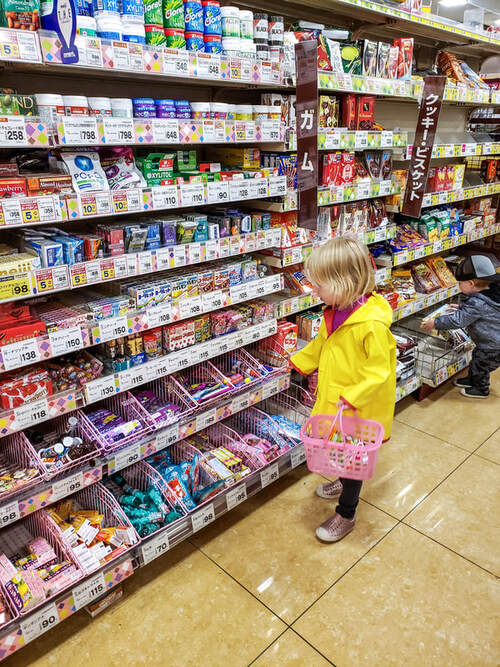
Where to stay?
Hotels and short term rentals (like AirBNB) are the two most popular styles of accommodation in Japan. Other, more unique, accommodation options like capsule hotels, hostels and ryokans offer a variety of options for different budgets and needs so it’s worth exploring whatever option you think might be best.
With respect to location, every city is different and so where you will want to stay will depend on what you want to see and your budget. However, speaking specifically of Tokyo it is a HUGE city (both geographically and in terms of population) and so you will probably spend quite a bit of time on transit getting from one area to another. I would recommend staying as close as possible to a subway station and no further than 30 minute subway ride to the majority of the things you want to see.
Hotels – booking.com is very popular in Japan and is a great place to start looking for accommodation options. We found searching for hotel rooms particularly difficult because children under 6 (appear) to be expected to sleep with their parents. When we searched for hotel rooms we were often given only twin bed options which would definitely not work for a family of 4!
If you prefer to stay in hotels check out this post by The Tokyo Chapter with family friendly hotel suggestions. I have consistently heard great things about the mimaru chain of hotels which have family rooms and suites with kitchenettes.
Short Term Rentals – we went with short term rentals so that we had 2 bedrooms (at minimum) in every city. It made a huge difference for us getting over jet lag (when kids were up at various hours of the night) and allowed us to make meals to save money when possible. AirBNB’s a tightly regulated in Japan and each host has to have a licence which should be clearly shown on their listing. When you book you are required to send a scanned copy of your passport to register your stay. We typically choose to stay with superhosts that have positive and recent reviews – it’s definitely not a must but it makes us feel a little more comfortable about what we can expect.
Hotels and short term rentals (like AirBNB) are the two most popular styles of accommodation in Japan. Other, more unique, accommodation options like capsule hotels, hostels and ryokans offer a variety of options for different budgets and needs so it’s worth exploring whatever option you think might be best.
With respect to location, every city is different and so where you will want to stay will depend on what you want to see and your budget. However, speaking specifically of Tokyo it is a HUGE city (both geographically and in terms of population) and so you will probably spend quite a bit of time on transit getting from one area to another. I would recommend staying as close as possible to a subway station and no further than 30 minute subway ride to the majority of the things you want to see.
Hotels – booking.com is very popular in Japan and is a great place to start looking for accommodation options. We found searching for hotel rooms particularly difficult because children under 6 (appear) to be expected to sleep with their parents. When we searched for hotel rooms we were often given only twin bed options which would definitely not work for a family of 4!
If you prefer to stay in hotels check out this post by The Tokyo Chapter with family friendly hotel suggestions. I have consistently heard great things about the mimaru chain of hotels which have family rooms and suites with kitchenettes.
Short Term Rentals – we went with short term rentals so that we had 2 bedrooms (at minimum) in every city. It made a huge difference for us getting over jet lag (when kids were up at various hours of the night) and allowed us to make meals to save money when possible. AirBNB’s a tightly regulated in Japan and each host has to have a licence which should be clearly shown on their listing. When you book you are required to send a scanned copy of your passport to register your stay. We typically choose to stay with superhosts that have positive and recent reviews – it’s definitely not a must but it makes us feel a little more comfortable about what we can expect.
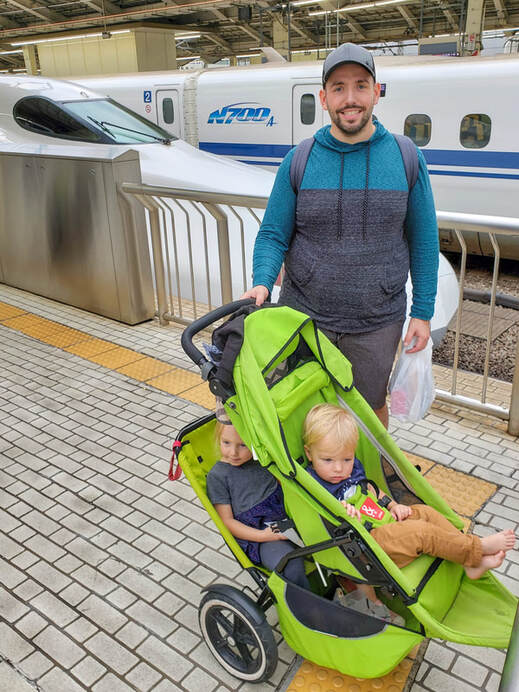
How to get between cities
Using the shinkansen (bullet train) is by far the most convenient way to get between destinations. Short inter-city flights are an option as well, especially worth considering if you plan on heading to the northern (Sapporo or Hokkaido) or southern (Okinawa or southern Kyushu) areas. However the shinkansen are comfortable, depart frequently and the train stations are much more conveniently located than the airports so I would definitely stick to those if possible.
JR Passes
JR is a company that owns some local train lines but also runs the inter city shinkansens (bullet trains). Buying a JR pass allows you unlimited travel on any of these JR run railways for 7, 14 or 21 consecutive days. Here are some tips and tricks for figuring out whether JR passes are going to save you money and how to get yours.
TIP #5: Kids under 6 travel free on the shinkansen however they won’t get their own seat. Consider whether you would like to purchase a seat for them (children's passes are half the cost) and factor this into your transportation budget.
Once you’ve decided that a JR pass is the right purchase for you, head over to this post about how to purchase, activate and use your JR pass.
Using the shinkansen (bullet train) is by far the most convenient way to get between destinations. Short inter-city flights are an option as well, especially worth considering if you plan on heading to the northern (Sapporo or Hokkaido) or southern (Okinawa or southern Kyushu) areas. However the shinkansen are comfortable, depart frequently and the train stations are much more conveniently located than the airports so I would definitely stick to those if possible.
JR Passes
JR is a company that owns some local train lines but also runs the inter city shinkansens (bullet trains). Buying a JR pass allows you unlimited travel on any of these JR run railways for 7, 14 or 21 consecutive days. Here are some tips and tricks for figuring out whether JR passes are going to save you money and how to get yours.
- There are JR passes for the entire country but also for specific areas. Check out first what kind of JR pass you might need to cover your longer distance trips.
- Use the JR calculator on the JR website to calculate whether the 7, 14 or 21 day pass will be a worthwhile investment. Consider re working your itinerary so that you can do as many of your longer trips in as short a period as possible. For instance we had initially planned on doing Tokyo – Kyoto – Hiroshima – Osaka but found it was most economical to do the longest leg (Tokyo-Hiroshima) a shorter leg (Hiroshima-Kyoto) and all of our day trips (Miyajima, Nara and Arashiyama) within a 7 day period. We also used the JR rail line when possible. If the calculation says that it is close to being worthwhile I would recommend getting it. You will use it here and there for inner-city transit which will save you money on the IC card. In addition, when you have the pass you don’t need to purchase train tickets for day trips like Nara or Miyajima. Being able to just flash our card to get
- JR passes are for tourists and so need to purchase them prior to your trip. A voucher is then mailed to you. You bring the voucher with you to Japan where you trade it in for your actual pass.
TIP #5: Kids under 6 travel free on the shinkansen however they won’t get their own seat. Consider whether you would like to purchase a seat for them (children's passes are half the cost) and factor this into your transportation budget.
Once you’ve decided that a JR pass is the right purchase for you, head over to this post about how to purchase, activate and use your JR pass.
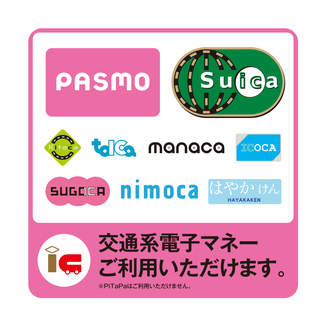
Using the Metro System
I can only speak to the cities that we were in – Tokyo, Kyoto, Osaka and Hiroshima. For these larger cities, and for many smaller ones, day to day travel on the metro (subway and bus) is by far the most convenient and inexpensive way to travel. Cabs and ride shares, at least in Tokyo are very expensive and while walking between some sights is possible, many are quite far apart.
If I have one recommendation for planning your trip it’s this: TAKE TRANSIT TIME INTO ACCOUNT – THEN DOUBLE IT. I felt confident that I had planned our days out well. I had chosen things that were close to each other, I had mostly only planned one thing “big” thing per day. What I didn’t take into account was that even something as simple as transferring from one subway line to another or exiting one of the bigger subway stations like Shinjuku, Shibuya, Kyoto or Tokyo could take 10 or 15 minutes, even more if you have a stroller and need to find an elevator. The stations are more like underground cities and it was often difficult to navigate and find the exit that we needed. If it gives you any context, Shinjuku station is considered the busiest in the world with 12 different lines converging there and over 3 million people per day passing through it. It is all part of the experience of navigating a big city like Tokyo and we loved the people watching, the fun shops and restaurants that were part of the station but it definitely reduced the amount of coming and going we could do. There was definitely no quick jaunts back to our apartment for nap time!
IC Cards (Pasmo, Suica, ICOCA, Pitapa etc)
Local trains: The local trains/subways are very easy to use and google maps makes planning your route a breeze. You can pay cash in a pinch but I would HIGHLY recommend getting a metro (IC) card. Here are things you should know about the IC cards
TIP #6: If you are traveling with kids who are 6+ and require their own pass I would highly recommend getting a card holder that they can wear around their neck. Since you have to scan in and out of the train stations you will need to have the card handy. It will be easier if they don’t have to be taking it in and out of their pockets and risk dropping it.
I can only speak to the cities that we were in – Tokyo, Kyoto, Osaka and Hiroshima. For these larger cities, and for many smaller ones, day to day travel on the metro (subway and bus) is by far the most convenient and inexpensive way to travel. Cabs and ride shares, at least in Tokyo are very expensive and while walking between some sights is possible, many are quite far apart.
If I have one recommendation for planning your trip it’s this: TAKE TRANSIT TIME INTO ACCOUNT – THEN DOUBLE IT. I felt confident that I had planned our days out well. I had chosen things that were close to each other, I had mostly only planned one thing “big” thing per day. What I didn’t take into account was that even something as simple as transferring from one subway line to another or exiting one of the bigger subway stations like Shinjuku, Shibuya, Kyoto or Tokyo could take 10 or 15 minutes, even more if you have a stroller and need to find an elevator. The stations are more like underground cities and it was often difficult to navigate and find the exit that we needed. If it gives you any context, Shinjuku station is considered the busiest in the world with 12 different lines converging there and over 3 million people per day passing through it. It is all part of the experience of navigating a big city like Tokyo and we loved the people watching, the fun shops and restaurants that were part of the station but it definitely reduced the amount of coming and going we could do. There was definitely no quick jaunts back to our apartment for nap time!
IC Cards (Pasmo, Suica, ICOCA, Pitapa etc)
Local trains: The local trains/subways are very easy to use and google maps makes planning your route a breeze. You can pay cash in a pinch but I would HIGHLY recommend getting a metro (IC) card. Here are things you should know about the IC cards
- They are all interchangeable. It doesn’t matter which one you purchase you can use them in virtually all major cities
- They are used for more than the metro! You can use them at vending machines, 7-11 and Lawson stores and many other locations. Just look for the image on the right where you are shopping.
- There is a refundable 500 yen deposit on the IC cards and they can be purchased at almost any station or at the airport. They will also refund your remaining balance. However, you have to get your refund in the same city you purchased it in (ie. Pasmo/Suica card in the Tokyo area, ICOCA card in the Kansai area etc). Bring it to any non-JR train station or to the stations at the airport and they will refund your balance as well as the deposit to you.
- There is a Welcome Suica card that you can purchase at JR East Travel Service Centres that are located at the airport (NRT or HND) or at the major JR stations. It has no deposit and is valid for 28 days from the day of purchase HOWEVER you cannot refund your balance so you have to make sure you use your full balance prior to leaving. Otherwise the card works the same was as any of the other IC cards.
- To use your card, load money on to it using the machines located at any metro station. You can put as little as 1000 yen on it (approximately 10 dollars). Tap your card as you enter AND exit the train station. The cost of your trip will be deducted and your balance will be shown.
TIP #6: If you are traveling with kids who are 6+ and require their own pass I would highly recommend getting a card holder that they can wear around their neck. Since you have to scan in and out of the train stations you will need to have the card handy. It will be easier if they don’t have to be taking it in and out of their pockets and risk dropping it.
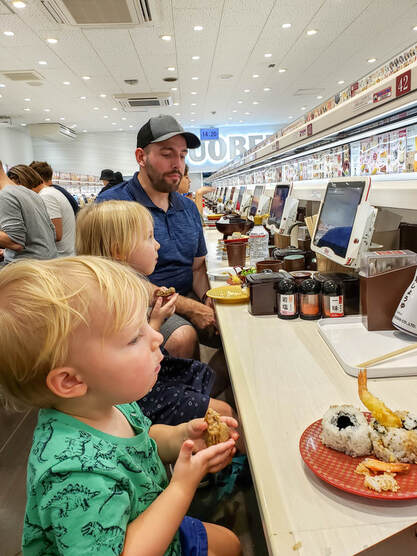
How to Stay Connected
A lot of people get portable wifi’s when they travel to Japan. This makes sense if you’re traveling in a group and want to share a connection between you or if you plan on using a large amount of data. The downsides are that the battery doesn't always last a full day which means you may have to turn it off and on when you need to use it. In addition, it is another item that you have to carry around with you during the day. If you’re already carrying kids, diapers, wipes, snacks etc. you know you don’t need another item in your backpack. If you want to explore whether the portable wifi is the right option for you I recommend checking out this article by Pretraveller, the group that runs the Japan Travel Planning group on Facebook.
Another option is to get a data only sim. We found ours on Amazon. It was approximately 25 dollars for 15 days with a maximum of 6 gbs of data. If you exceed the data limit it continues to work but at a much slower speed. Just make sure your phone can be and is unlocked and check that your phone will be compatible with a Japanese Sim Card. To do that head to this website. We actually purchased two sim cards and while we typically only use one phone between the two of us we found it very useful to be able to stay in contact. There were times where we split up (for example Chris quickly went back to the airBNB to grab the luggage while I burned off steam with the kids and then walked to the train station) and it was nice to be able to stay in contact.
Do you need a pocket wifi or sim card? No. There are plenty of wifi hot spots in all major train stations, in many public places and on the shinkansen. Do I recommend that you have one? YES!! While you can download offline maps to navigate, I think the combination of traveling with kids, being in big cities like Tokyo, the lack of street signs and the language barrier make being able to look up things on the go a huge bonus. The last thing you need is to be searching out a wifi hot spot to find the nearest park or coffee shop with a hangry or tired kid at your side.
Final Thoughts
Planning your trip can be overwhelming. You can start with either a wicked flight deal or building your ideal itinerary. If you’re traveling from North America or Europe, consider giving yourself one extra day at your starting location account for jet lag and getting used to the city. Figure out approximately how many days you want to stay in each city and whether you will benefit from having a JR pass. Once you’ve nailed down your flight itinerary, start to look for accommodation options and planning your activities! No matter what you do you will have a blast!
Pin it for later!
A lot of people get portable wifi’s when they travel to Japan. This makes sense if you’re traveling in a group and want to share a connection between you or if you plan on using a large amount of data. The downsides are that the battery doesn't always last a full day which means you may have to turn it off and on when you need to use it. In addition, it is another item that you have to carry around with you during the day. If you’re already carrying kids, diapers, wipes, snacks etc. you know you don’t need another item in your backpack. If you want to explore whether the portable wifi is the right option for you I recommend checking out this article by Pretraveller, the group that runs the Japan Travel Planning group on Facebook.
Another option is to get a data only sim. We found ours on Amazon. It was approximately 25 dollars for 15 days with a maximum of 6 gbs of data. If you exceed the data limit it continues to work but at a much slower speed. Just make sure your phone can be and is unlocked and check that your phone will be compatible with a Japanese Sim Card. To do that head to this website. We actually purchased two sim cards and while we typically only use one phone between the two of us we found it very useful to be able to stay in contact. There were times where we split up (for example Chris quickly went back to the airBNB to grab the luggage while I burned off steam with the kids and then walked to the train station) and it was nice to be able to stay in contact.
Do you need a pocket wifi or sim card? No. There are plenty of wifi hot spots in all major train stations, in many public places and on the shinkansen. Do I recommend that you have one? YES!! While you can download offline maps to navigate, I think the combination of traveling with kids, being in big cities like Tokyo, the lack of street signs and the language barrier make being able to look up things on the go a huge bonus. The last thing you need is to be searching out a wifi hot spot to find the nearest park or coffee shop with a hangry or tired kid at your side.
Final Thoughts
Planning your trip can be overwhelming. You can start with either a wicked flight deal or building your ideal itinerary. If you’re traveling from North America or Europe, consider giving yourself one extra day at your starting location account for jet lag and getting used to the city. Figure out approximately how many days you want to stay in each city and whether you will benefit from having a JR pass. Once you’ve nailed down your flight itinerary, start to look for accommodation options and planning your activities! No matter what you do you will have a blast!
Pin it for later!

